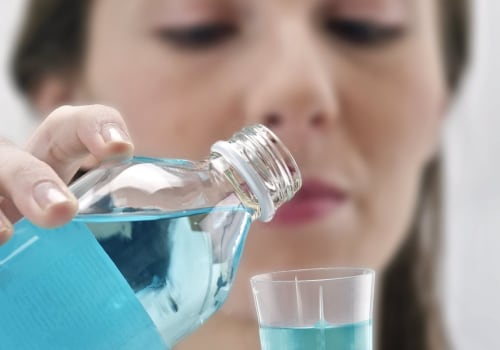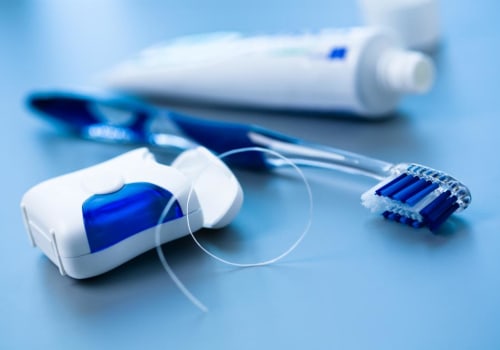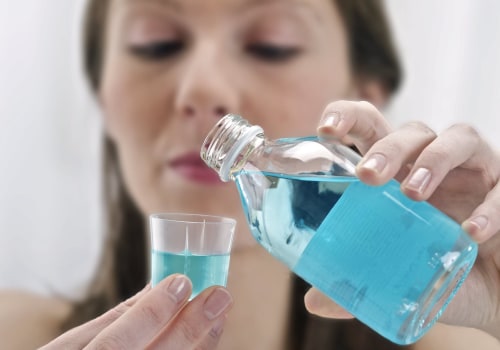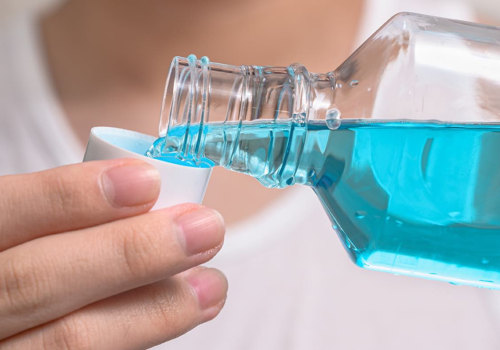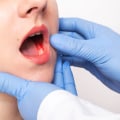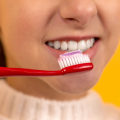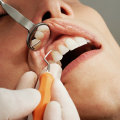Bad breath, also known as halitosis, can be an embarrassing and distressing problem. Fortunately, using mouthwash or rinse can be an effective way to prevent and manage bad breath. There are many different types of mouthwash or rinse available, and understanding the differences between them can help you choose the right one for your needs. This article will explain the benefits of using mouthwash or rinse for bad breath prevention and management, and provide tips on choosing the right mouthwash or rinse for you.
The first step in managing bad breath is to establish good oral hygiene habits. This includes brushing twice a day, flossing once a day, and using a tongue scraper to remove bacteria from the tongue. Once these habits are in place, a mouthwash or rinse can be used to supplement them. Mouthwashes and rinses are available in two forms: over-the-counter (OTC) and prescription.
OTC mouthwashes are generally formulated with alcohol or other antiseptic ingredients and are designed to reduce bacteria in the mouth. Prescription mouthwashes are usually more concentrated and should only be used under the direction of a dentist or physician. When using an OTC mouthwash or rinse, it is important to follow the instructions on the label. Generally, you should swish the product around your mouth for 30 seconds before spitting it out.
It is important not to swallow the product as it can contain potentially harmful ingredients. It is also important to remember that while mouthwashes can help reduce bacteria in the mouth, they will not necessarily eliminate bad breath. In addition to OTC and prescription mouthwashes, there are also natural products that can help reduce bacteria in the mouth. These include salt water rinses, baking soda rinses, hydrogen peroxide rinses, and tea tree oil rinses. Before using any of these natural products, it is important to speak with your dentist or physician as some may not be suitable for certain individuals. It is important to note that there may be potential side effects associated with the use of mouthwashes or rinses.
These can include increased sensitivity of the teeth and gums, dryness of the mouth, and an increased risk of cavities due to reduced saliva production. If you experience any of these side effects, it is important to speak with your dentist or physician as they may need to adjust your treatment plan. Overall, the use of a mouthwash or rinse can help reduce bacteria in the mouth and can be an effective part of a bad breath prevention and management plan. However, it is important to speak with your dentist or physician before starting any new treatment plan.
Potential Side Effects
Using a mouthwash or rinse can come with potential side effects, such as increased sensitivity of the teeth and gums, dryness of the mouth, and an increased risk of cavities due to reduced saliva production. Increased tooth and gum sensitivity can be caused by the alcohol content in some mouthwashes, as well as other ingredients such as menthol or eucalyptol.This can result in pain or discomfort when consuming hot or cold foods and beverages. Dryness of the mouth is also a potential side effect of using a mouthwash, and can be more pronounced with alcohol-based products. This is because alcohol can reduce saliva production which leads to a dry feeling in the mouth. A reduction in saliva production can also lead to an increase in cavities and tooth decay since saliva helps to wash away food particles and bacteria that can cause cavities. It is important to consult with a dentist before using a mouthwash or rinse, as there may be other factors that can contribute to bad breath that should be addressed first.
Additionally, individuals may need to experiment with different products to find the one that works best for them and their needs.
How to Use Mouthwash
Using a mouthwash or rinse is an important part of any good oral hygiene routine. In order to get the most out of it, it's important to use it correctly. Here's how:Step 1: Read and follow the instructions on the product label carefully. This includes any warnings about swallowing the mouthwash.Step 2: Pour the recommended amount of mouthwash into a cup or rinse cup.
Step 3:
Swish the mouthwash around your mouth for 30 seconds, making sure to cover all areas of your mouth, including your gums, tongue, and teeth.Step 4:
Spit out the mouthwash, and rinse your mouth with water if necessary.Step 5:
Don't swallow the mouthwash! Swallowing mouthwash can be dangerous, so make sure to spit it out after swishing it in your mouth. By following these steps, you can ensure that you get the most out of your mouthwash and that you are using it properly and safely.Types of Mouthwash
Mouthwash is an important part of any oral hygiene routine, and there are a variety of types available for bad breath prevention and management.Over-the-counter (OTC) mouthwashes are widely available, and they usually contain antibacterial agents to help reduce bacteria in the mouth that can cause bad breath. Prescription-strength mouthwashes may also be recommended by a dentist or doctor for more severe cases of bad breath. In addition to OTC and prescription mouthwashes, there are also natural products that can be used as rinses or mouthwashes. Salt water rinses are one of the most popular, as salt is known to help reduce inflammation and kill bacteria. Baking soda rinses are also effective for fighting bad breath, as the baking soda helps neutralize odors.
Hydrogen peroxide rinses can also be helpful for bad breath, as it has both antiseptic and anti-bacterial properties. Tea tree oil rinses may also be beneficial, as it is known to have antibacterial and antifungal properties. When using any type of mouthwash or rinse, it is important to follow the instructions on the product label carefully. It is also important to remember that mouthwash is not a substitute for regular brushing and flossing, and should be used in addition to a comprehensive oral hygiene routine. In conclusion, using a mouthwash or rinse can help reduce bacteria in the mouth and be an effective part of a bad breath prevention and management plan. However, it is important to speak with your dentist or physician before starting any new treatment plan to ensure that the mouthwash or rinse is suitable for you.
Different types of mouthwash are available, and it is important to select the type that is most appropriate for your needs. Additionally, it is important to follow the directions for use and be aware of potential side effects.
